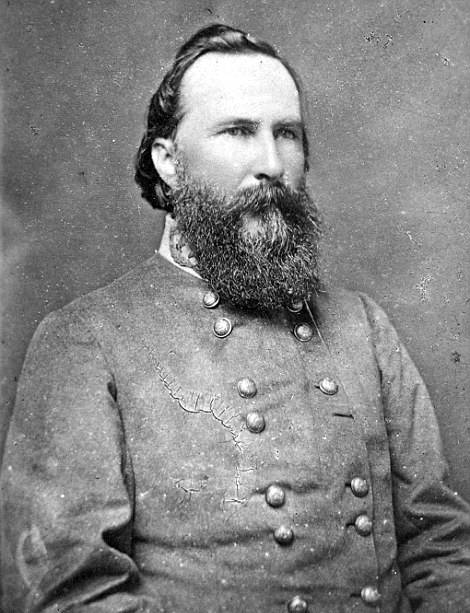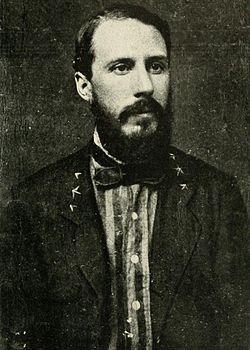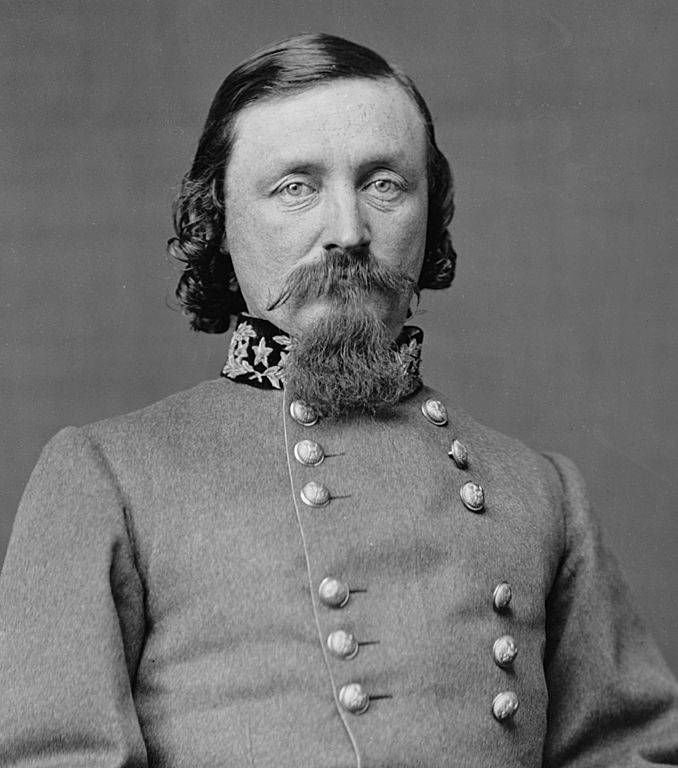The disaster of the third day at Gettysburg had its origin on the morning of the second day. LTG James “Pete” Longstreet was GEN Lee’s most trusted aide. Longstreet was a defensive-minded leader; he preferred to select the timing and terrain and defend against an offensive enemy attack. After the ambush on Day 1, he argued against attacking the Union Army assembling on the hills at Gettysburg. He wanted to swing his Corps south and east and attack Meade’s forces as they moved towards Gettysburg. Lee rejected that plan outright. His response was essentially: “The enemy is here; we will attack him here.” He then gave Longstreet the order to attack the Union left flank.
When Longstreet returned to Lee’s HQ late on Day 2, he found him in deep discussion with MG Pickett. Since it was Lee’s command philosophy to speak directly to only his three Corps Commanders (Longstreet, Hill and Ewell), Longstreet took this tête-à-tête with Pickett as a slight to his authority. In Lee’s defense, it seemed that this discussion was purely by chance. Pickett had reported in at Lee’s HQ late in the afternoon of Day 2 and had never been included in that day’s attack plan. He was, however, to lead the primary attack force on Day 3. It would be only natural to brief him on the plan while awaiting the results of the Day 2 battle.
Lee proceeded to revert to his standard command policy and gave the order to Longstreet to have Pickett lead the attack on the center of the Union line on Day 3. He was to be supported by 2 (depleted) divisions from Hill’s Corps to the north and on his right by the two other (depleted) brigades of Anderson’s Division.
But Longstreet was in a pique. Having had his attack plan rejected outright and now seeing Lee in deep discussion with Pickett, Longstreet reportedly sulked off to his own HQ and did nothing more to prepare for the Day 3 attack. At the very least, he should have coordinated with Hill over the use of the divisions on Pickett’s left flank. Another area where Lee played a more direct role – somewhat out of character for him – was that he gave orders to COL Alexander (Longstreet’s Chief of Artillery) to assemble as many cannons as possible on Seminary Ridge in preparation for a pre-attack barrage. Some historians contend that this order was given as early as the afternoon of Day 2 while Longstreet was off directing the fighting to the south. Others say it didn’t occur until the morning of Day 3. In dealing directly with Alexander, Lee had by-passed both Longstreet (Alexander’s boss) and his own Chief of Artillery, BG Pendelton. It was said that Lee had little confidence in Pendleton’s effectiveness as a leader.
The commanders of the 2 divisions of Hill’s Corp that were to support Pickett’s attack were both new to the job. On Day 1, both MG Heth –whose men had borne the brunt of the fighting – and MG Pender, who supported Heth to the south of the Chambersburg Road, were wounded and out of action. BGs Trimble and Pettigrew were now in command of those divisions. There is no doubt that they could have used the coordination and support of LTGs Hill and Longstreet on the morning of Day 3.
Longstreet played a very passive-aggressive role as overall battlefield commander on Day 3. It was actually an interaction between COL Alexander and MG Pickett that launched the attack as the artillery barrage subsided. Trimble and Pettigrew had to wait to see Pickett’s men step off from the wooded slope of Seminary Ridge before they began their advance. Seemingly, Longstreet waited as long as he possibly could to direct Anderson’s two brigades to move out of the area of the Peach Orchard to support Pickett’s right flank. Their advance was too little, too late. Pickett was far too advanced in his movement for their tentative attack to have any effect.
Lee’s plan to attack the heart of the Union line has been described as somewhat fool-hearty. It focused on the small copse of trees on Cemetery Ridge. But, in reality, it was seemingly sound – if it had gone as planned. In a previous [editor’s note: I have described the actions on Day 3 as one of Frustration and Fuses.]
In reality, on the late afternoon of Day 2, Wright’s Brigade of Anderson’s division of Hill’s Corps had successfully advanced all the way to the top of Cemetery Ridge at exactly the spot where Lee was aiming Pickett. Wright was unable to exploit that advance due to a lack of support on either of his flanks and therefore had to withdraw. Lee had every reason to believe that a multi-division attack could succeed where a Brigade attack had faltered. Plus, Lee had the additional layer of the largest (and loudest) artillery barrage ever executed in the Western Hemisphere. Lee had no way of knowing that the fuses Alexander’s cannoneers were using were defective and that the pre-attack barrage would had little or no effect on the Union infantry.
Lee never seemed to be aware of what Longstreet took as an affront to his authority. No one will ever know if a true multi-division attack on Day 3 – an attack as Lee envisioned it in his mind – could have succeeded. It is doubtful that it could have. One of Lee’s presumptions was that in response to the prior day’s flank attacks Meade would have moved troops to reinforce those flanks and thereby weakening the center of his line.
Lee had no way of knowing that Meade not only had sufficient forces at every point on his defensive perimeter but also had reserves in depth behind those on the firing line. At the center of the line where Lee was aiming on Day 3, the Union infantry were so packed together that they were 3-4 men deep. The best shot of the group was at the wall and the others aligned behind him reloading muskets and passing them forward. The result was a continuous volley of fire that wouldn’t be reproduced until the use of machine guns in WW I.
Also, since Pickett was focused on such a small area, Union infantry and gunners north and south of the area under direct attack were able to concentrate supporting fire directly on Pickett’s troops. Not even the timely use of the supporting Confederate divisions could likely have lessened the devastation they wrought on Pickett’s division.



